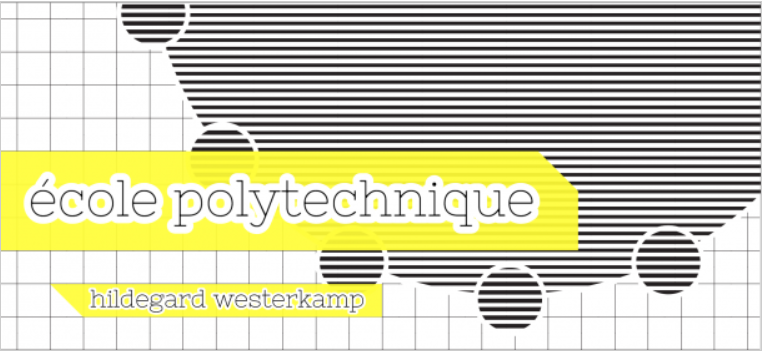By Frank Horvat
On December 6, 1989, I was 15 years old—a grade 10 student at Nepean High School. Growing up under the care of two loving parents in a quiet, upper middle class neighborhood in Ottawa, life was predictable and somewhat sheltered. Watching the news with my parents on that fateful night shattered all that seemed good and innocent about the world.
News coverage of the immediate aftermath of the École Polytechnique massacre, where women were separated from their classmates and killed by a man wielding a rifle, shook me to the core. I had heard about senseless acts of violence, but I always imagined them as relics of the past or something that was occurring far away. Montreal was nearby. It was a city that I always enjoyed visiting as a child.
My immediate reaction was to simply ask “why?” Why would someone go out of their way to harm women? It made no sense to me. I grew up in a household with a working mom who was my best friend—a woman of conviction, intelligence and passion. She has been instrumental in shaping the person that I am today.
In a cold, hard way, Polytechnique made me realize that misogyny is common and pervasive within Canada. Ever since that day I have been increasingly conscious of the endless cases of violence, abuse and persecution of women in this country and elsewhere.
For these reasons, École Polytechnique by CMC Associate Composer Hildegard Westerkamp is an important work; not just in the annals of Canadian contemporary music but also in the wider spectrum of Canadian arts and culture. In my residency this fall, I have explored four compositions written by my peers that sonify memories of painful events, or comment on social justice issues of our day. For its visceral qualities, Westerkamp’s work is one of the most heart wrenching as it brings back December 6, 1989 in vivid and powerful ways.
An excerpt from the score for École Polytechnique. Copyright: Hildegard Westerkamp
École Polytechnique is scored for 8 church bells, mixed choir, bass clarinet, trumpet, percussion, and two-channel tape. Westerkamp was invited to compose the work only a few months after the massacre. On November 3, 1990, the work was premiered outdoors in Montreal as part of a New Music America/Montreal Musiques Actuelles event. The recording effectively captures the mood of that performance although being there in person must have been an awe-inspiring experience—hearing the sounds of bells emanating from the tower at the Université du Quebec à Montréal must have been stirring and powerful.
Listening to École Polytechnique, I am struck by the fact that it is not elegiac. Rather than a plaintive or mournful sound, the work is defiant. At the 10-minute mark the choir begins to intone the names of the victims in a monotone fashion, chanting with volume and assertiveness. The music suggests Westerkamp’s intention to commit these names, the identities of the 14 women, to memory—forgetting them would make the impacts of the tragedy more devastating.
Other aspects of the piece play with our elegiac expectations. In the middle sections of the work—the six to ten minute mark—we hear the gun shots followed by horrific cries from the percussion, bass clarinet and choir. These sounds mingle with audio of the news coverage of the massacre, followed by wailing sirens and crying. Westerkamp’s compositional treatment of this section is masterful, and highly sensitive. At no point does the representation of violence in the music feel gratuitous. Listeners will have varied reactions to a piece, and will likewise have a different comfort level with revisiting traumatic events. In my own listening, the piece helps me recollect the deep-seated emotions of that day.
Westerkamp deploys the instruments in thoughtful ways. As a composer and listener I find Westerkamp’s work particularly valuable as a demonstration of the versatility of the trumpet in modern chamber music. The two trumpets have sensitive and lyrical moments, while at other times they convey a militaristic quality perhaps serving to codify other forms of weaponry, violence, and patriarchal structures. Although, the more terrifying connotation is that women are at the front lines (and have been) in the fight against violence in domestic and public spaces—women have literally placed themselves in harm’s way for society to simply acknowledge the realities of misogyny and the broader implications of gendered violence in society.
The piece has a clear emotional character to me: there are many moments of breathiness and openness, almost pointillistic texturally without being rhythmically chaotic. This is composition with conviction, and that sense of emotion does not devolve into overworked compositional material.
Despite not being composed in the traditional spirit of an elegy, Westerkamp’s programme notes indicate the importance of the work as a means for introspection about violence against women, but also compassion and healing.
École Polytechnique brings us back to a terrible day in Canadian history. This is the kind of composition that should be performed annually, and throughout the country. It is the kind of music that should be made part of school curriculum, in particular because the lessons of December 6 have not been learned.
We fail when we cannot address the traumatic reality of missing and murdered Indigenous women, we fail when women seeking abortions are met with physical intimidation, and we fail when Muslim women are told what they can and cannot wear.
If we are truly serious about eradicating misogyny and antifeminism, we must continue to employ our musicians and artists to address these issues and learn from these tragic events.
Frank Horvat is one of several contributors taking part in the CMC Library Residency program, which profiles works from CMC Associate Composers. Visit the community page on the CMC website regularly for new features in the series. You can learn more about Hildegard Westerkamp and her music on her CMC Profile Page.

